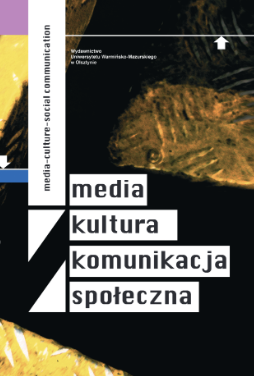Accessibility of public health information on the COVID-19 outbreak: Analysis of the first European official TV releases
Accessibility of public health information on the COVID-19 outbreak: Analysis of the first European official TV releases
Author(s): Tanja KostanjevacSubject(s): Social Sciences, Media studies, Communication studies
Published by: Wydawnictwo Uniwersytetu Warmińsko-Mazurskiego w Olsztynie
Keywords: accessibility to media contenttent; cultural rights of persons with disabilities; public health information; social inclusion; deaf people
Summary/Abstract: Due to co-morbidity, persons with disabilities are among the most endangered groups, and in terms of mortality, they are among the worst affected groups in the crisis caused by global pandemics. This crisis has extremely increased inequality and social exclusion of persons with disabilities regarding access to public health information.This paper investigates the extent to which European states have made the AV content of the announcements of the COVID-19 pandemic accessible to hearing-impaired persons.A content analysis was conducted at the beginning of the pandemiological measures (February/March 2020) introduced in the sample states. An analysis unit consists of the first TV broadcasts released with official statements of the EU member states (N=27), European Economic Area states (N=3) and Switzerland, as well as official video releases of the World Health Organization and the European Commission (N=2).From the total analyzed TV deliberate sample (N=33), a total of eight official sources provided accessibility of health information to hearing-impaired persons using a sign language interpreter; 12 sources provided subtitles, and 11 sources did not provide any form of accessible information regarding the official proclamation of the COVID-19 pandemic (including the WHO’s television release). Only four national official sources ensured full accessibility to the content of the announcement.The obtained results demonstrate the real situation characterized by insufficient social inclusion and protection of the right to information and communication and the violation of the right to health and healthy living of persons with disabilities at the European level. These results are contrary to globally adopted regulations and proclaimed protection of fundamental rights and freedoms and rights arising under the instrument of international solidarity. It is necessary to increase the level of consciousness of a community’s global social responsibility, especially in the TV media, with the purpose of the total inclusion of hearing-impaired persons in the public space. The mission of higher education institutions should include overcoming poor media social responsibility by adopting digital accessibility mechanisms and improving the intercultural skills of future media professionals.
Journal: Media – Kultura – Komunikacja Społeczna
- Issue Year: 18/2022
- Issue No: 1
- Page Range: 23-39
- Page Count: 17
- Language: English

